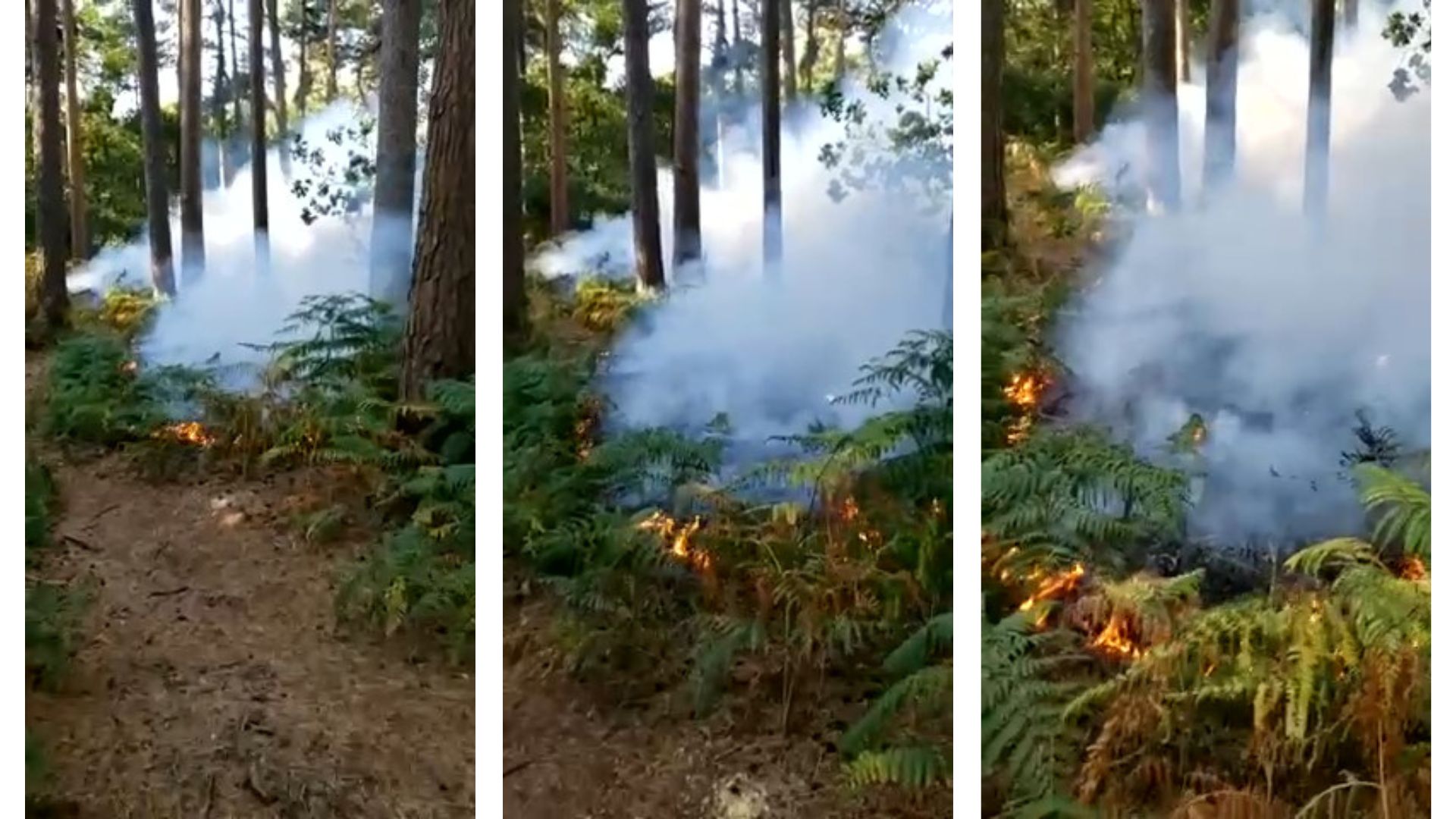Summer Lightning falls victim to the Coldharbour Common fire, as firefighters tackle a blaze affecting two hectares of forest
Several classic mountain bike trails, including Summer Lightning, in the Surrey Hills near Dorking, UK, have been damaged or destroyed by wildfires.
Located on Coldharbour Common, the fire broke out on Tuesday 9th August at about 2.30pm, and affected around two hectares of dense forest, according to local news outlet Surrey Live. Smoke and flames were visible, burning through the dry undergrowth and the equally dry forest canopy, which in this area mostly consists of coniferous woodlands.
Local mountain bikers, including MBR editor Danny, noted that some of the area’s famed and popular mountain bike trails lay within the affected zone, and there are Forestry England signs notifying riders that certain trails are closed – although the ash and smoke are something of a giveaway.
The fire had persisted despite the best efforts of the fire services, with Surrey Fire and Rescue on site for three days tackling the initial blaze, further outbreaks, then damping down the surrounding area.

The soil on the common is an organic-rich peat, the kind that’s historically been dried and used as a fuel source, and with current conditions is itself catching fire. All might look well on the surface, but the fire can smoulder underneath, spreading and emerging as hot spots in other locations, and triggering further outbreaks. Fire services are having to resort to bulldozing up sections of ground to break the spread. This isn’t great news for mountain bikers or the local ecosystem.
The cause of the fire has not been confirmed, and while summer lightening can indeed provide the spark of ignition for forest fires – oh, the irony – it’s unlikely to have been the cause in this case. Sadly, due to weeks of drought, any tiny spark could have provided the catalyst, even something as small as a discarded cigarette butt.
The Surrey Hills aren’t the only area of the UK to experience wild fire over the summer months, and while the UK’s experience of these events is less devastating and dramatic than that seen in the US or Australia, they can still ravage delicate ecosystems and destroy tracts of land. A recent fire in Dorset at the Studland nature reserve had at its peak 90 firefighters in attendance, and triggered a rescue operation to evacuate holidaymakers from beaches close to the blaze, according to the BBC.
How to avoid starting a fire
With drought conditions across most of the British Isles, the likelihood of fires increases significantly. Forests and heathland becomes like a tinder box, with dry leaves, twigs and grass easily catching with the tiniest of sparks.
You might remember the fire triangle from school; a fire needs fuel, oxygen and a source of ignition. The fuel is everywhere, in the form of those dry leaves and trees. Oxygen isn’t really something we can do anything about, but avoiding sources of ignition is often well within our control. While there are some natural ignition sources – lightning being one – sadly a very high proportion of wild fires have a human origin, but that IS something we can help control.
If you’re riding during a heatwave, do not:
- Light disposable barbecues, stoves or barbecues, unless in designated areas.
- Ignore any signs that prohibit the lighting of barbecues or fires.
- Do not build or light fires or bonfires.
- Drop cigarette butts or matches.
- Drop litter, which can combust or catch fire in hot weather.
- Don’t leave glass bottles or glasses. The glass can focus the sun’s rays and start a fire.
What to do if you encounter a wildfire in the UK
Devon and Somerset Fire service have this advice to give if you are out and about, and spot a fire. Dial 999 and ask to speak to the fire service. Give them the exact location of the fire, using a mapping app, so for example GPS coordinates, map coordinates, Ordnance Survey or WhatThreeWords.
Ensure you are able to get out of the area safely, and avoid breathing in the smoke if you can.




